Hubble Telescope: Viewing the Final Frontier
Overcoming Adversity
In 1986, the Challenger tragedy forced NASA to delay launches for two years as questions of safety eroded public support. Conflicting perspectives of space exploration developed. Instead of halting the project, this time was well-spent improving the sensitivity of Hubble instruments.
Hubble Launch, 1990, CBS.
Finally, in 1990, the Hubble telescope was launched into space on the space shuttle Discovery. Shortly after, a flaw in the mirror causing blurry images was discovered. Public criticism soon replaced launch celebrations.
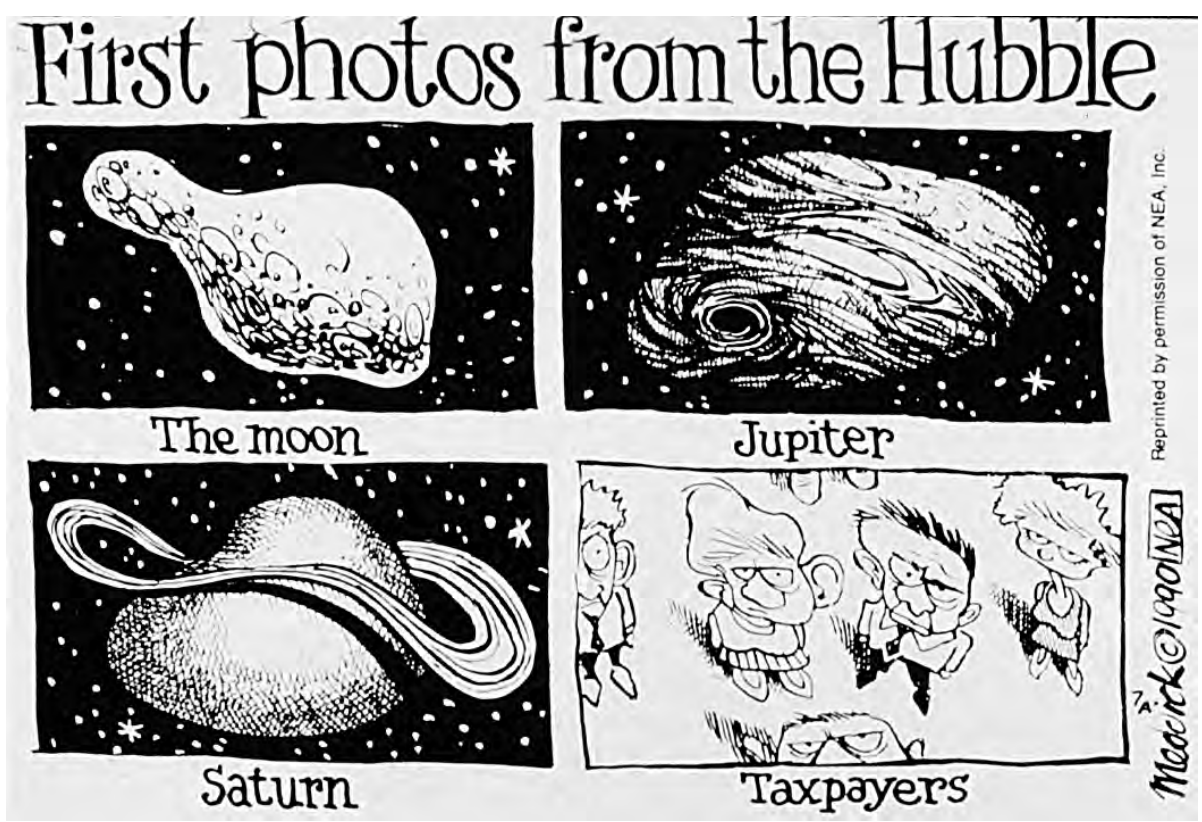
Political Cartoon, 1990, NEA.
"Who remembers the day that Galilieo picked up his telescope to look at the stars? It doesn't matter what day we launch Hubble,
it matters what we do right."
-Truly, NASA's Associate Administrator for Space Flight
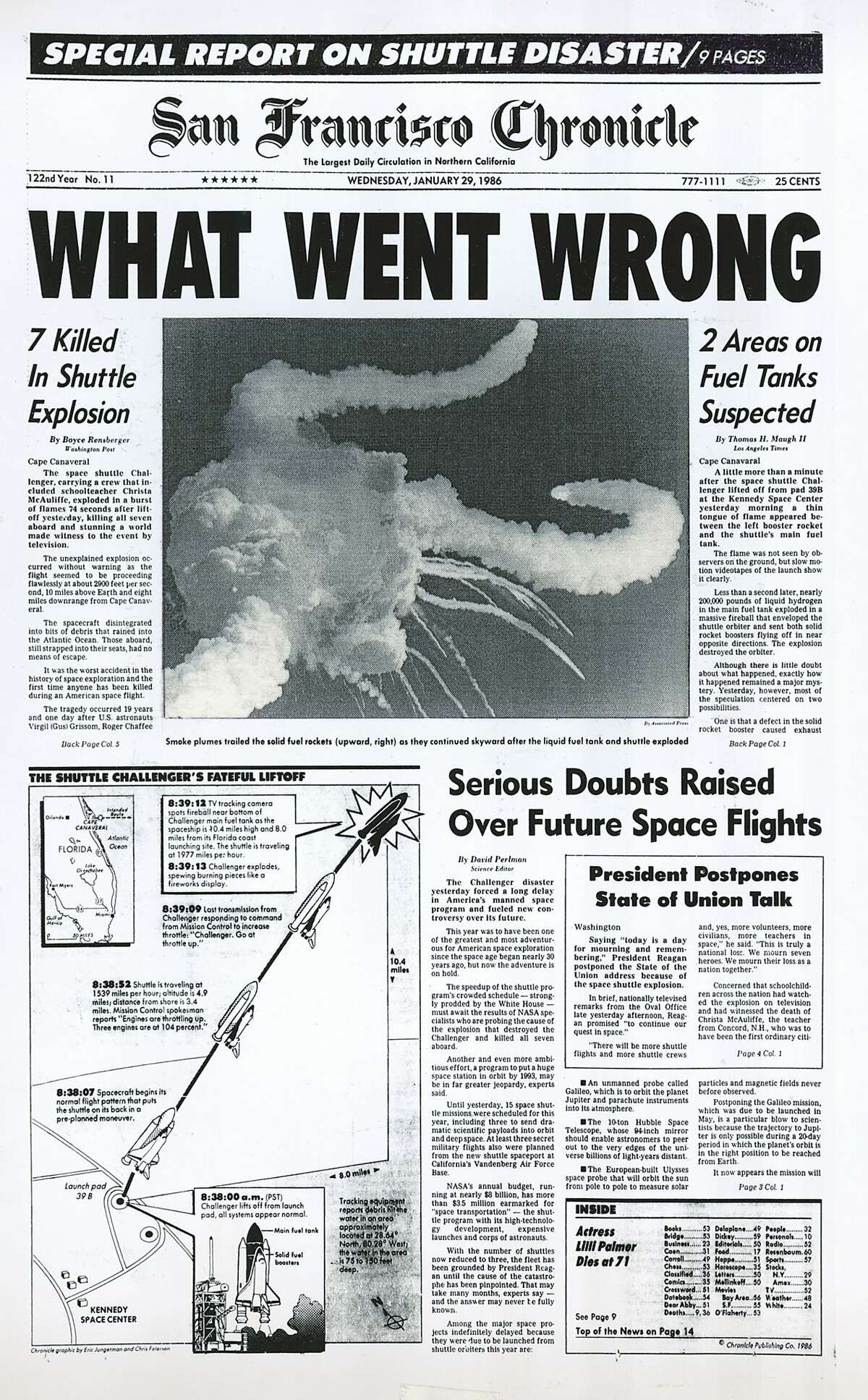
Challenger Tragedy, 1986, San Francisco Chronicle.
Although images were blurry, they were vastly improved from those collected from ground telescopes. Scientists remained determined to support Hubble, knowing the telescope's potential and the important frontiers that it would cross.
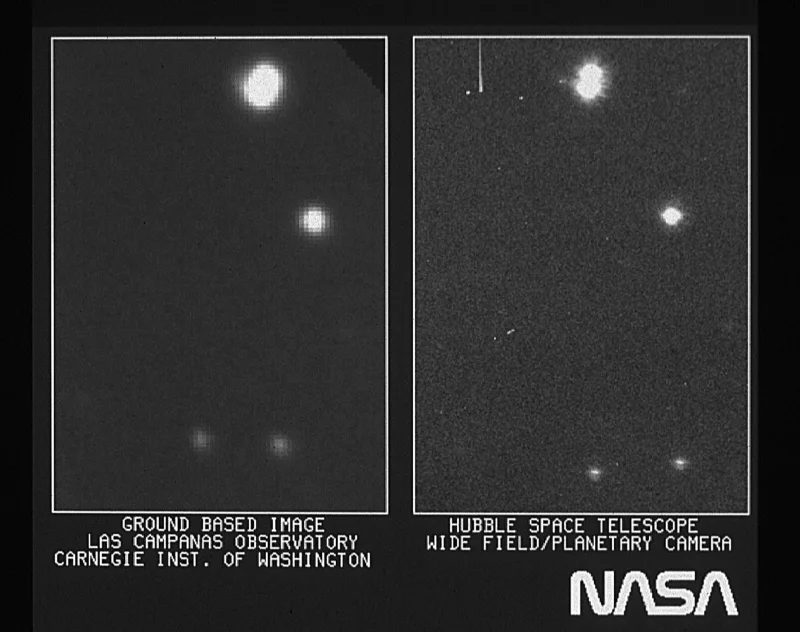
Comparing Views, 1990, NASA.
Scientists developed a corrective optics package improving Hubble's image quality. Learning it would take NASA two million dollars to fix the problem, many believed the project was a failure. With the understanding that it would be a ground-breaking frontier, scientists pushed on.
"These things take time. We'll just have to fix it."
-Lyman Spitzer, Astrophysicist
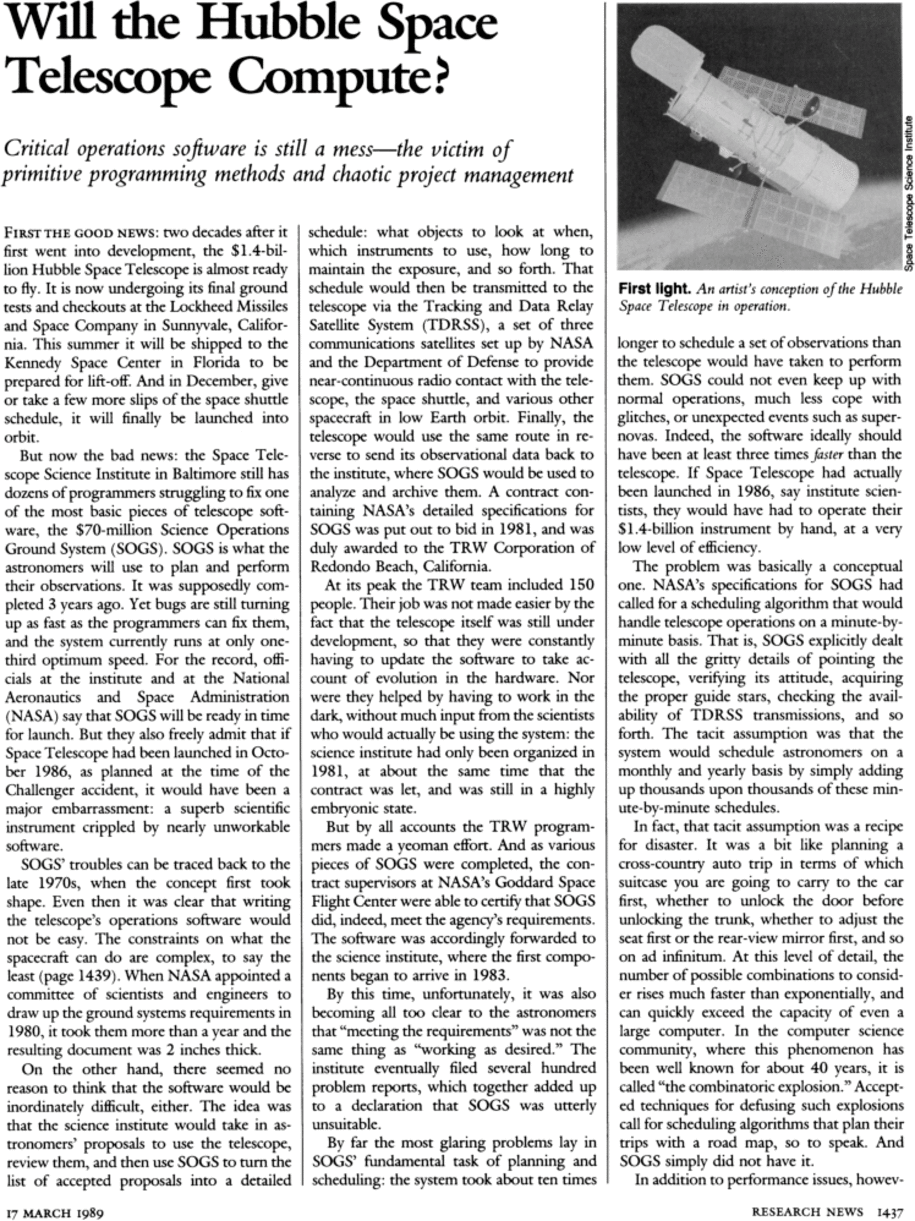
Questioning Hubble, 1989, Research News.
In 1989, financial issues that plagued Hubble were publicly examined. Initial funding was approved by Congress in 1977, yet the launch did not occur until 23 years later due to technical issues. Hubble faced conflicting perspectives as citizens questioned if the investment in Hubble was worth the expense.
"The American track record is superb at trying to do impossible things, but they are impossible things. They take a little longer."
-Bob Zimmerman,"The Universe in a Mirror: The Saga of the Hubble Space Telescope and the Visionaries Who Built It"
Congressional hearings were called to address technical problems and look into expenditures. Visionaries like Senator Barbara Milulski kept the Hubble dream alive, advocating for the advances it would bring.
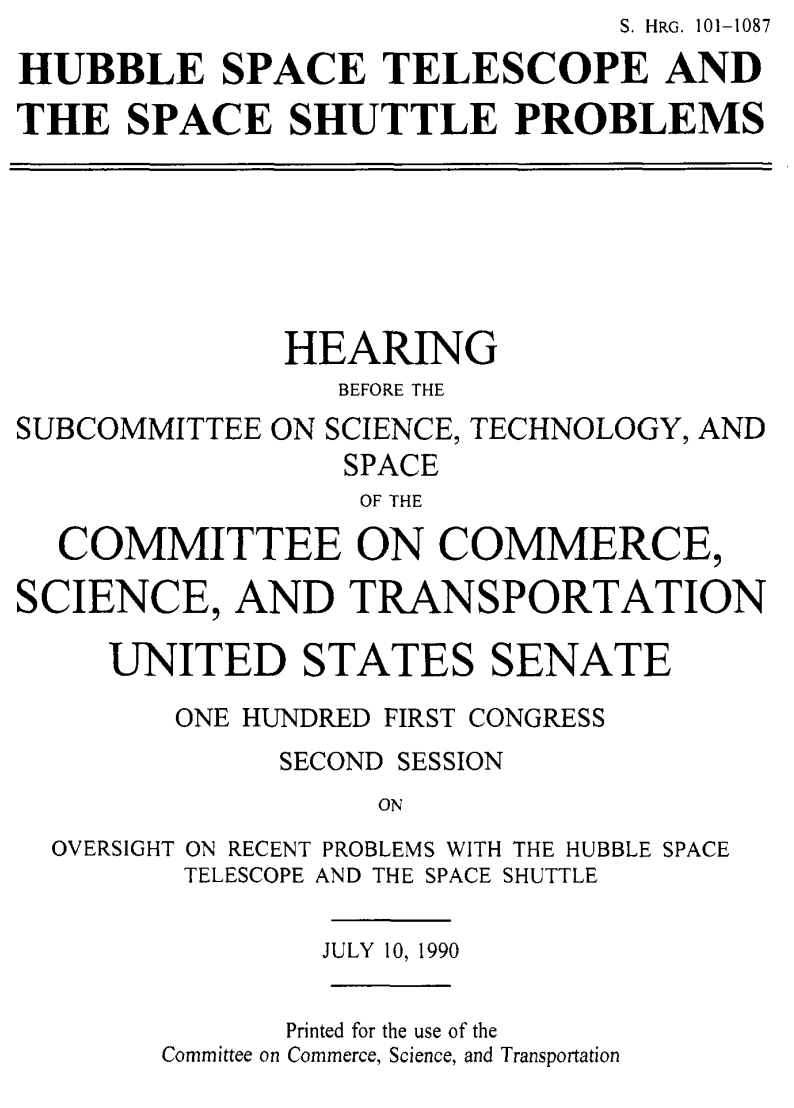
Hearing Report, 1990, Committee of Commerce, Science, and Transportation.
"I will fight in the United States Senate this year to fund a servicing mission to Hubble."
-Barbara Mikulski, Maryland State Senator
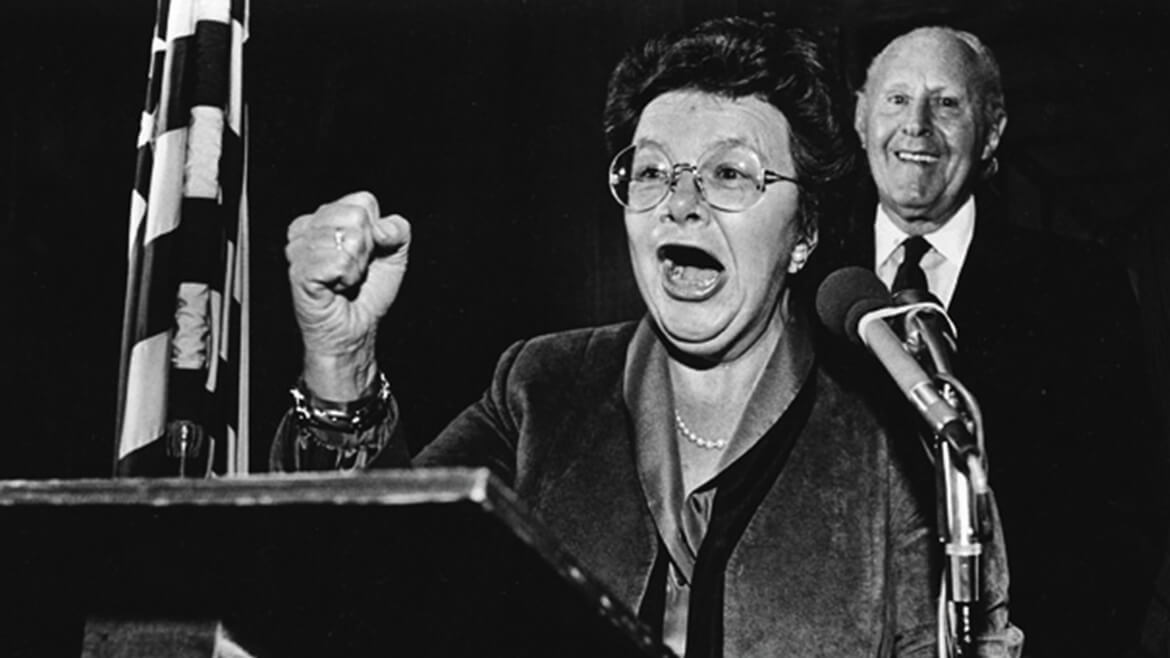
Senator Mikulski, 1987, Washington Post.
Hubble relied on partners outside of the scientific community who were determined to cross frontiers in space. Senator Mikulski lobbied Congress gaining needed support for Hubble. This critical funding provided for costly repair missions leading to Hubble's successful operation.
"You see, you don't have to work in a lab to champion science research; you can serve as the lead Democratic appropriator on the Commerce Justice Science Subcommittee...And you certainly don't have to blast into space to blaze a trail--Something the longest serving female Member of Congress (Barbara Mikulski) knows very well."
-Ms. Collins, United States Senator
Through the 1980s, the University of Wisconsin successfully created the Hubble High Speed Photometer instrument. Relying on the cooperation of diverse individuals, the state-of-the-art instrument was completed under budget.
Dr. Lattis, 2023, University of Wisconsin, Personal Interview
“They (High Speed Photometer Team) were the pioneers.
They began developing the key technologies.”
-John Gallagher, University of Wisconsin Hubble Scientist
Hubble Succeeds